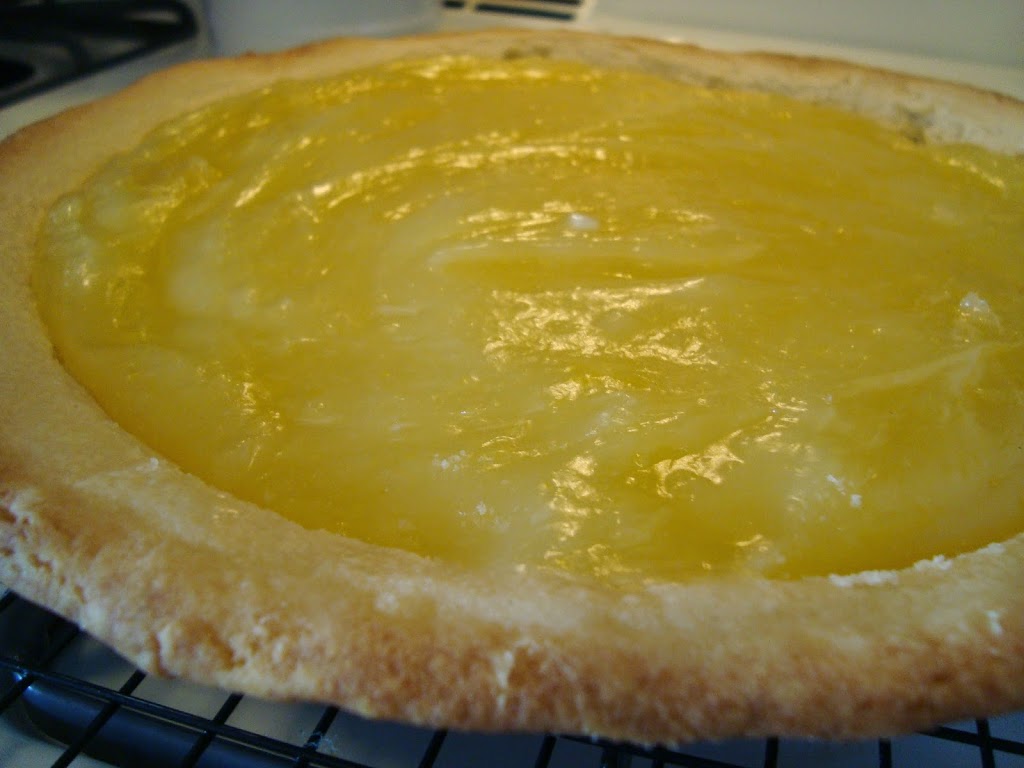Nothing says Easter or spring to me quite like lemon meringue pie, with its crown of toasted marshmallow-like meringue. It’s my mama’s favorite pie, and she always made sure there was one on the dessert table at Easter dinner. One spring many years ago now, I told her I would make the lemon meringue pie. As a surprise for her, I decided to make everything – the crust, the filling, and of course, the meringue – completely from scratch, instead of using store-bought crust and boxed lemon pudding. At the time, it was an ambitious undertaking.
I remember being stunned by the massive difference in the flavor of the fresh lemon filling, something akin to lemonade made with freshly squeezed lemons. It really tasted nothing at all like the pudding-filled pies I’d eaten before. I decided then and there that if ever I made another lemon meringue pie, it would be with this filling recipe. It’s not difficult – just a simple custard cooked on the stove and poured into your prepared crust, much the same as the boxed pudding mix.
You can easily use a store-bought pie crust if you’re short on time (or hate making pie crust, which is the case with some folks), but I love this shortbread crust recipe – it’s like having a bit of butter cookie in every bite.
And meringue is – well, meringue. All recipes for it are pretty much the same. I’ve discovered, though, that nothing makes fluffy meringue quite like the whip attachment of a KitchenAid stand mixer. So if you have one, use it.
Lemon Meringue Pie with Sweet Shortbread Crust
Adapted from The Joy of Cooking by Irma Rombauer
For the crust:
1-1/4 cup pastry flour
1/2 teaspoon kosher or fine grain sea salt
rounded 1/4 cup confectioners’ sugar
1 stick (8 tablespoons) unsalted butter
3 tablespoons ice water
Put the flour, salt, and sugar into the bowl of a full-size food processor fitted with the blade, and pulse a few times to blend.
Add the cubed butter and pulse on high until the mixture resembles coarse crumbs.
With the processor running, dribble the water, a tablespoonful at a time, into the mixture. When the dough forms and starts to pull away from the sides of the bowl, stop the processor. Pulse a few times more if needed to catch any floury bits.
Turn the dough out onto a floured surface, and massage into a smooth ball, working in any bits of flour and butter that are not already blended into the dough, until it’s smooth.
If the dough feels cold to the touch, you don’t need to chill it. You can roll it out now. If it is warm-ish and soft, wrap it in plastic wrap and chill it in the fridge for 15-20 minutes or so, until it’s cold but not rock solid.
To roll, pat the dough into a flat, round disk. Sprinkle with a little more flour, and flour your rolling pin as well. Roll out into a 12-inch circle. Place it carefully into the pie plate. Use your fingers to gently press the dough into the plate, working any air pockets toward the edge. Use a fork to prick holes in the dough, so that air can escape as it bakes. Form whatever kind of edge you want.
Chill thoroughly in the refrigerator before baking. When you are ready to bake, line the chilled crust with foil, and fill with pie weights, rice, or dried beans (this prevents the crust from shrinking). Brush the edge lightly with beaten egg. Bake 15 minutes in a 425° oven, then remove the weights and foil. Continue to bake, checking every few minutes, until golden. Set aside to cool slightly.
While the crust is chilling and baking, make the filling:
1-1/2 cups evaporated cane juice (sugar)
6 tablespoons corn starch
1/4 teaspoon kosher or fine grain sea salt
1/2 cup cold water
juice of two lemons (about 1/2 cup)
3 egg yolks, beaten (tip: save the whites for the meringue; if you will be making it the next day, store them in the fridge, tightly covered)
1-1/2 cups boiling water
2 tablespoons unsalted butter
zest of 1 lemon (tip: zest one of the lemons before juicing)
1/2 teaspoon vanilla extract
In a large saucepan (not over heat yet), whisk together the sugar, corn starch, and salt. Whisk in the cold water and lemon juice, then the egg yolks, until smooth and fully combined. Slowly add the boiling water, whisking as you do so. Place the pan over medium heat, and whisk in the butter. Bring to a boil, stirring gently as the mixture bubbles and thickens. When the filling has become a thick custard, remove from the heat and stir in the lemon zest and vanilla. Pour into the prepared crust, and set aside to cool completely, or place in the refrigerator to expedite the cooling process.
*Note: you can make the pie to this point a day or two ahead of time. Add the meringue from a few hours up to right before serving.
To make the meringue:
4 egg whites
1/4 teaspoon cream of tartar
1/2 cup confectioners’ sugar
1/2 teaspoon vanilla extract
Shredded coconut (optional)
In the bowl of a mixer fitted with the whisk attachment, beat the egg whites at medium speed until foamy. Add the cream or tartar and beat until soft peaks form. Slowly sprinkle in the sugar, continuing to beat as you do, and then beating on high speed until stiff, glossy peaks form. Beat in the vanilla.
Use a rubber spatula to spread the meringue over the filling, creating swirls and peaks as you do. If you desire, sprinkle with shredded coconut.
To toast the meringue, bake 10-15 minutes in a 425° oven, until golden brown.
Serves 8-12.
Here’s the printable. Happy spring!



